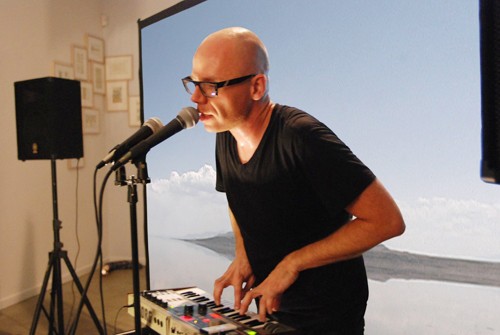Sure, cities like New York and Paris are most commonly associated with famous artists and their works. But the city of Tucson and the state of Arizona are also highly competitive locations for some of the best artists in the Southwest.
On June 25, the Tucson Museum of Art will open its doors to the 2011 Arizona Biennial art exhibition. This selective contest, which has occurred every two years since 1948, is committed to showcasing the most progressive and high-quality works in Arizona. This year, 476 artists from Tucson, Phoenix, Sedona, Bisbee and beyond submitted a total of 1,318 pieces.
The contest allows any artist 18 and older to submit their art, which provides an equal opportunity for artists who are just starting out, as well as artists who are already established. Julie Sasse, the chief curator of the Tucson Museum of Art, explained that, “”For many artists who have shown in only one or two shows, (the biennial) becomes their first big break.”” And at the same time, the contest “”allows established artists to be reaffirmed that their work is still interesting to outsiders,”” Sasse said.
The contest considers pieces of virtually every medium, including installation and performance, and the museum brings in a well-established guest curator to provide a fresh perspective. This year’s biennial was judged by Anne Ellegood, the senior curator at UCLA’s Hammer Museum. Sasse said Ellegood is well-known for her progressive and current outlook on contemporary art.
Of all the work submitted, only 45 artists were selected. One of these artists is Gary Setzer, an assistant professor of art at the UA. Setzer’s winning submission is a work of performance art titled “”Supralingual/Sublingual,”” which combines video and musical performance to explore the abstract concepts of language and communication.
“”I want to provide an experience that’s multilayered, so that people from different backgrounds can have different access points. There are many different ways to relate to artwork,”” Setzer said.
Setzer will perform his piece at the Tucson Museum of Art’s “”Art After Dark”” on June 24. His show begins at 8 p.m. and will last for approximately 50 minutes. He encourages people to attend the performance, and interact with it in any way they choose, including laughing or dancing. He explained that his work is serious as well as humorous.
“”Meaning can be accessed by all sorts of different routes,”” Setzer said.
Setzer has already toured his piece in cities such as Denver, Philadelphia, Chicago and New York. But he said that it is still exciting to be featured in the exhibition and recognized by such a respectable venue. “”It should be fun to perform in front of a lot of people that I know, rather than a group of strangers. I think it’ll be a different type of energy,”” Setzer added.
On the other side of the spectrum is Josh Schaffer, an artist who received his Bachelor of Fine Arts in studio art from the University of Arizona this May. Schaffer graduated with an emphasis in sculpture, and contributed his large-scale installation piece “”The Study of Aftermath,”” to the exhibition.
Schaffer described his piece as “”a wall with pipes coming out of the middle of it,”” and explained that the artwork creates an explosion-type of visual effect. He said that the work is inspired by materiality.
“”I try to take mundane environments and disrupt them. (“”The Study of Aftermath””) is about disrupting man’s quest for order, essentially by changing materials in a mundane environment,”” Shaffer said.
Schaffer said he was excited to have a piece accepted by the contest, and honored to be recognized by such a well-established curator. “”It means a lot that someone out there saw something in my piece … I am honored and humbled to be featured alongside some really great artists and faculty members from the UA,”” Schaffer said. Prior to this exhibition, his work had only been featured in a few local shows.
Both Setzer and Schaffer are representing the UA, and the Tucson area in general, at the Arizona Biennial.
“”These two artists are representing (us) in a very positive way, because they’re doing good quality work, and taking it out of the norm in terms of the expected … They’re edgy, they’re current, and the quality of their work is every bit as good as what I’ve seen elsewhere.”” Sasse said.
The Arizona Biennial exhibition runs from June 25 until Oct. 2. If you’re interested in traditional art forms like painting and sculpture, but also love seeing artists stretch their wings artistically, consider stopping by the exhibit.









